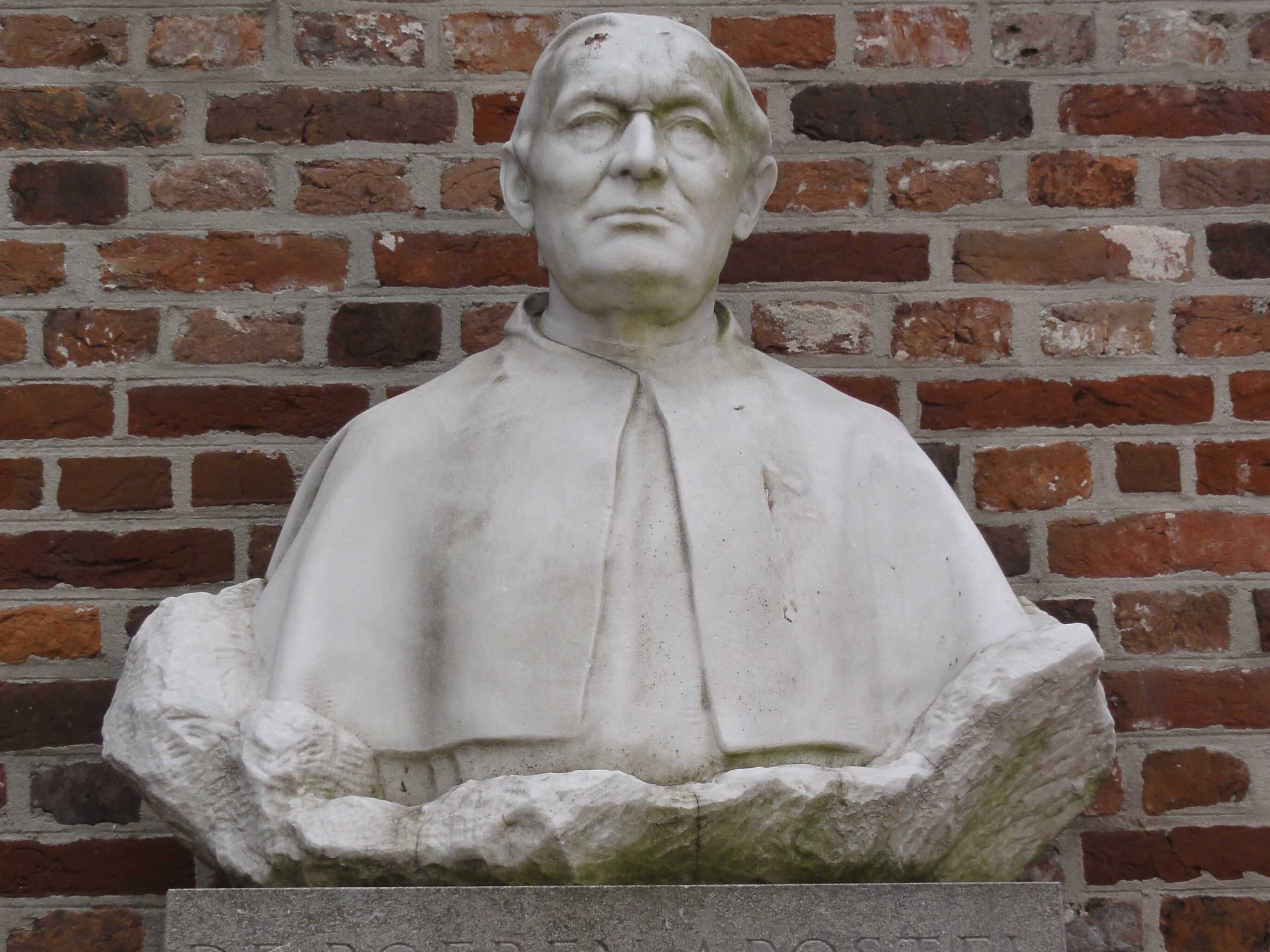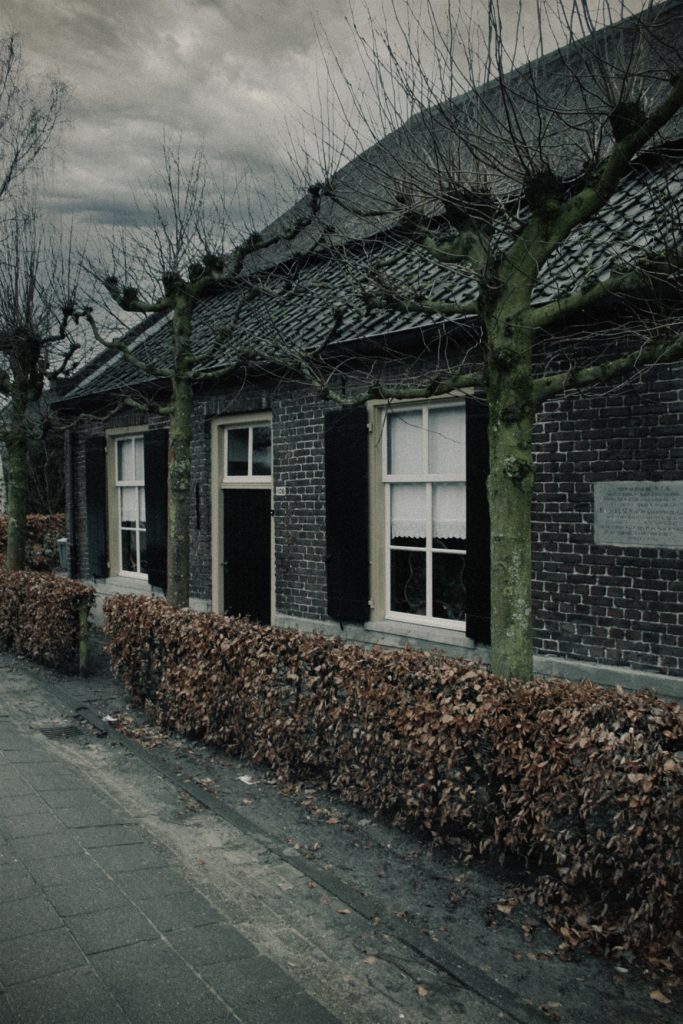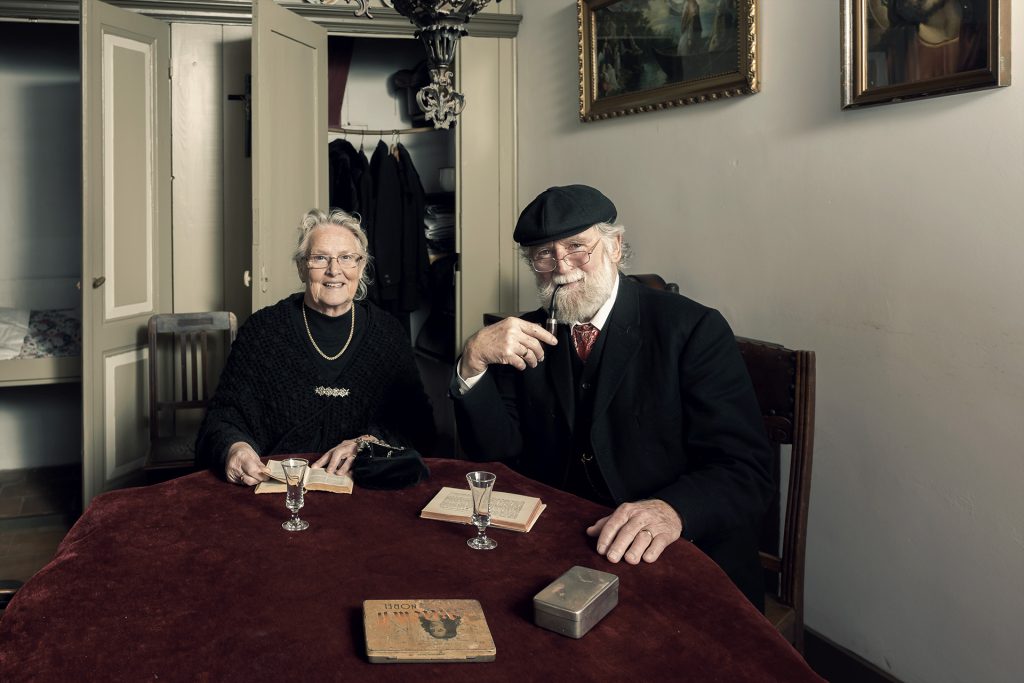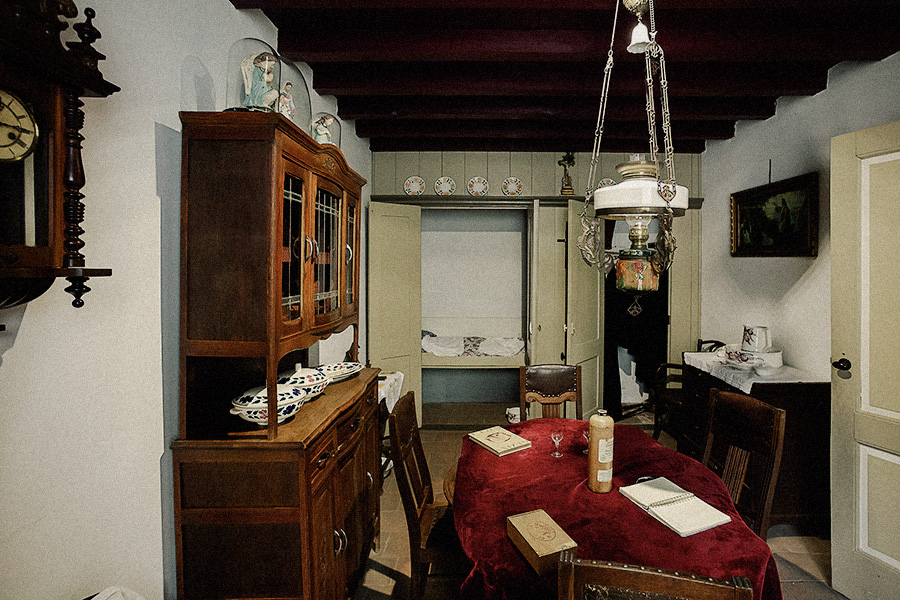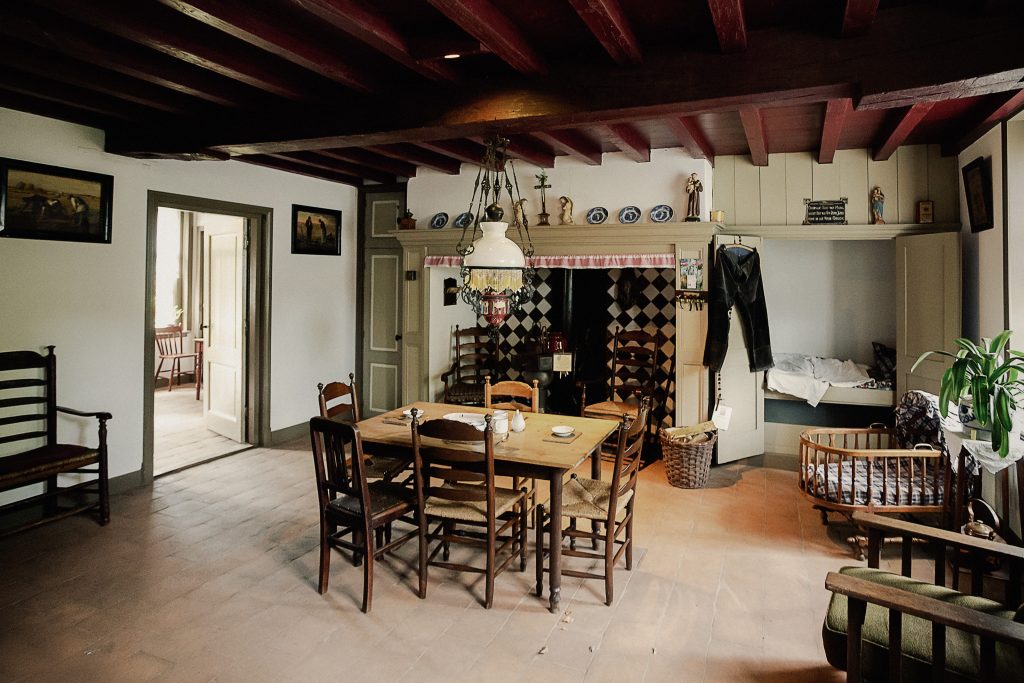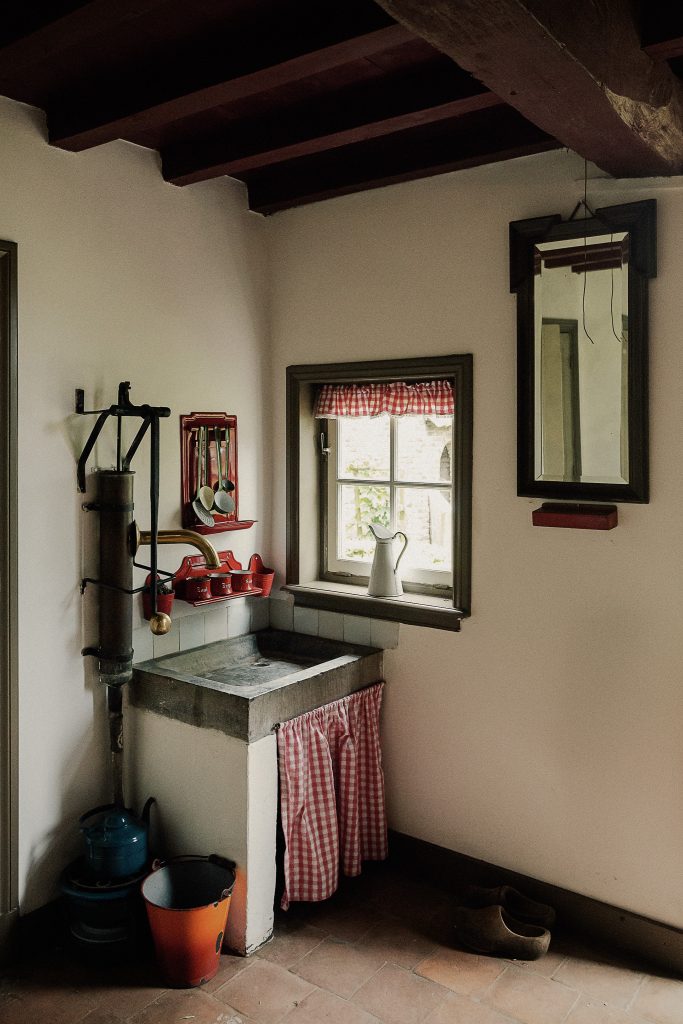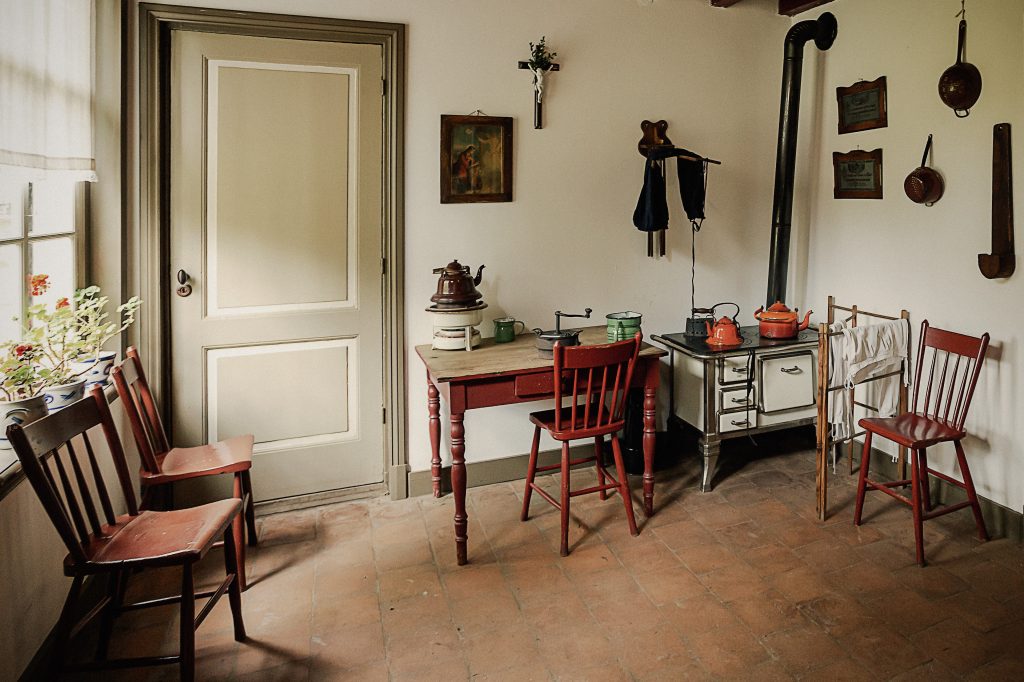The Boerenbondsmuseum is housed in the birthplace of Father Gerlacus van den Elsen, who lived from 1853 to 1925. Father Van den Elsen is the founder of the North Brabant Christian Farmers’ Union (now Z.L.T.O.) and of many farmers’ cooperatives. In the Boerenbondsmuseum there is a permanent exhibition about the life and work of Father Van den Elsen and the origins and growth of various cooperatives of which he was one of the founders.
Godefridus van den Elsen attended the Latin school in Gemert (this building still exists and can be found in the Ruijschenberghstraat in Gemert) and became a Norbertine of the Abbey of Berne in Heeswijk in 1869. After his ordination to the priesthood in 1876, he was chaplain in Berlicum for two years. There, his connection with the peasants and rural population was strengthened. However, Van den Elsen would carry out the largest activities from the abbey.
Creation of cooperatives
As a farmer’s son, he was stimulated by the prevailing agricultural crisis to do something for the needy farmers. He felt that some form of organization was necessary. On 24 January 1892 he published his article ‘The patient husbandman’ in the Noordbrabantsch Dagblad. Eventually, this led to the establishment of the Noordbrabantsche Christelijke Boerenbond (NCB) in 1896, in which Van den Elsen played a major part.
In 1898 he also became one of the founders of the Coöperatieve Centrale Boerenleenbank (CCB) in Eindhoven, following the example of the German Raiffeisen system. For years he crisscrossed the dioceses of ‘s-Hertogenbosch and Breda to establish local farmers’ unions and farmers’ loan banks.
He fought unyieldingly, stubbornly and demagogically, when farmers’ interests were at stake, such as during the ‘Butter War’ in 1904: a battle between the dairy organisations of the North Brabant farmers and butter traders with the ‘State Butter Brand’ at stake.
Conservative
Father van den Elsen opposed liberalism and socialism by advocating the religious and social development of farmers. He fought against excessive prices and unfair treatment, but also warned the peasants against too much materialism. He also wanted farmers to maintain their traditional lifestyle. He even had an expression: “a farmer with a moustache is a lor”, by which he meant that farmers should remain simple. He was critical of peasant girls who adopted modern city manners and no longer wore traditional costumes.
Where Van den Elsen could be strict with others, he could also be strict with himself: according to tradition, he studied in the evening, in order not to fall asleep, with his feet in a basin of cold water. As can also be seen in a replica of his study, above the main hall of the Boerenbondsmuseum.
The birthplace of Gerlacus van den Elsen is the most striking museum building
It is a long-gable farmhouse with the main characteristics that the living area, stable area and the storage area are situated next to each other and under one roof. The ‘geut’ (scullery) was mainly used in the summer. D’n herd (living room) was usually used in autumn and winter. The parents often slept in the box bed next to the stove. There used to be a lot of marriages; The married couple went to live with their parents. In addition to ‘d’n herd’ there was the ‘Goej kaomer’: the good room. This room was only used for visits by distinguished persons, such as the pastor, notary or doctor. The box bed in this room was still in use.
In 1979 the farm was threatened with demolition due to the reconstruction of the provincial road from Gemert to Erp. The board of N.C.B. did not see much benefit in preserving the farm, but wanted the memorial stone from the façade dating from 1956 to be returned when it was demolished. After many efforts, the working group Father Van den Elsen of the N.C.B. district of Gemert, De Mortel and Elsendorp was able to start the restoration in 1985, because in the meantime the reconstruction plans for the provincial road had been somewhat revised. The farm did not have to be completely moved. A major restoration and the construction of a bakehouse were realized. And with that, the first steps on the way to the Boerenbondsmuseum.

